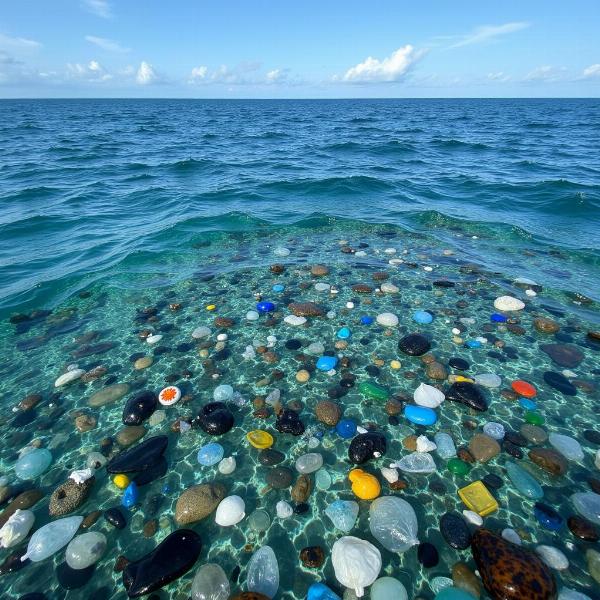Understanding the meaning of “floating debris” in Hindi is crucial, especially in contexts like disaster relief, environmental science, and maritime activities. This article will delve into the various Hindi translations, their nuances, and the importance of accurately conveying this term. We’ll explore the different scenarios where “floating debris” is relevant, from natural disasters to everyday life, and provide you with a comprehensive understanding of its significance.
What Does “Floating Debris” Mean in Hindi?
The most common Hindi translation for “floating debris” is तैरता मलबा (tairta malba). This term accurately captures the essence of floating objects, typically unwanted waste or remains. However, depending on the specific context, other translations can be more appropriate.
Alternative Translations and Their Contexts
- बहता कचरा (bahta kachra): This translates to “flowing garbage” and is often used when referring to debris carried by water currents, especially in rivers or streams.
- उपला मलबा (upla malba): Meaning “surface debris,” this term is suitable when describing debris floating on the surface of a body of water.
- तैरते हुए अवशेष (tairte hue avshesh): This phrase translates to “floating remains” and is typically used in more formal contexts or when referring to the aftermath of a disaster or incident.
Why is Understanding “Floating Debris” Important?
Knowing the precise meaning of “floating debris” in Hindi is vital for several reasons:
- Effective Communication: Accurate translation ensures clear communication, especially during emergencies or when coordinating disaster relief efforts.
- Environmental Awareness: Understanding the term helps raise awareness about pollution and its impact on aquatic ecosystems.
- Safety Precautions: Identifying floating debris is essential for safe navigation in waterways and avoiding potential hazards.
- Scientific Research: Accurate terminology is crucial for scientific studies related to pollution, oceanography, and environmental management.
“Floating Debris” in Different Scenarios
“Floating Debris” can refer to a wide range of objects and situations:
- Natural Disasters: After floods or tsunamis, large amounts of debris, including trees, houses, and vehicles, can be found floating in affected areas. In this context, तैरता मलबा (tairta malba) is commonly used.
- Marine Pollution: Plastic waste, fishing nets, and other pollutants constitute a significant portion of floating debris in oceans. बहता कचरा (bahta kachra) or उपला मलबा (upla malba) might be more appropriate in this context.
- Everyday Life: Even in everyday scenarios, floating debris like leaves, twigs, or discarded objects can be seen in rivers, lakes, or even swimming pools.
 Ocean Plastic Pollution
Ocean Plastic Pollution
How to Deal with Floating Debris?
Addressing the issue of floating debris requires a multi-faceted approach:
- Waste Management: Proper waste disposal practices are essential to prevent debris from entering waterways.
- Cleanup Efforts: Regular cleanup drives and initiatives are necessary to remove existing debris from water bodies.
- Public Awareness: Educating the public about the importance of responsible waste management is crucial.
- Policy and Regulation: Implementing effective policies and regulations can help control and mitigate the problem of floating debris.
Expert Insights
-
Dr. Anjali Sharma, Environmental Scientist: “Accurate terminology is fundamental in environmental science. Using the correct Hindi translation for ‘floating debris’ ensures clarity in research and communication, facilitating effective solutions to address this growing problem.”
-
Mr. Rohan Verma, Disaster Management Specialist: “In disaster relief operations, precise communication is paramount. Understanding the nuances of ‘floating debris’ in Hindi allows for efficient coordination and resource allocation, ultimately saving lives and minimizing damage.”
Conclusion
Understanding the meaning of “floating debris” in Hindi – whether it’s तैरता मलबा, बहता कचरा, or उपला मलबा – is essential for effective communication, environmental awareness, and safety. By understanding the context and using the appropriate translation, we can contribute to a cleaner and safer environment.
FAQ
- What is the most common Hindi word for “floating debris”? The most common word is तैरता मलबा (tairta malba).
- Why is it important to know the correct Hindi translation? Accurate translation is vital for clear communication, especially in disaster relief and environmental contexts.
- What are the different types of floating debris? Floating debris can range from natural materials like leaves and twigs to man-made waste like plastic and discarded objects.
- How can we reduce the amount of floating debris? Proper waste management, cleanup efforts, and public awareness campaigns are crucial for reducing floating debris.
- What is the impact of floating debris on the environment? Floating debris can pollute waterways, harm aquatic life, and disrupt the natural ecosystem.
- What does उपला मलबा (upla malba) mean? It means “surface debris” and refers to debris floating on the surface of water.
- When should I use बहता कचरा (bahta kachra)? This term is suitable when referring to garbage flowing in rivers or streams.
Meaning-Hindi.in is your one-stop solution for all your Hindi translation needs. We offer a wide range of professional translation services, including business and commercial document translation, certified and legal document translation, technical and user manual translation, website and localization translation, educational and academic document translation, express translation, and specialized translation. Contact us today for accurate, culturally sensitive, and timely translations. Email: [email protected], Phone: +91 11-4502-7584. Meaning-Hindi.in can help you bridge the language gap and achieve your communication goals.